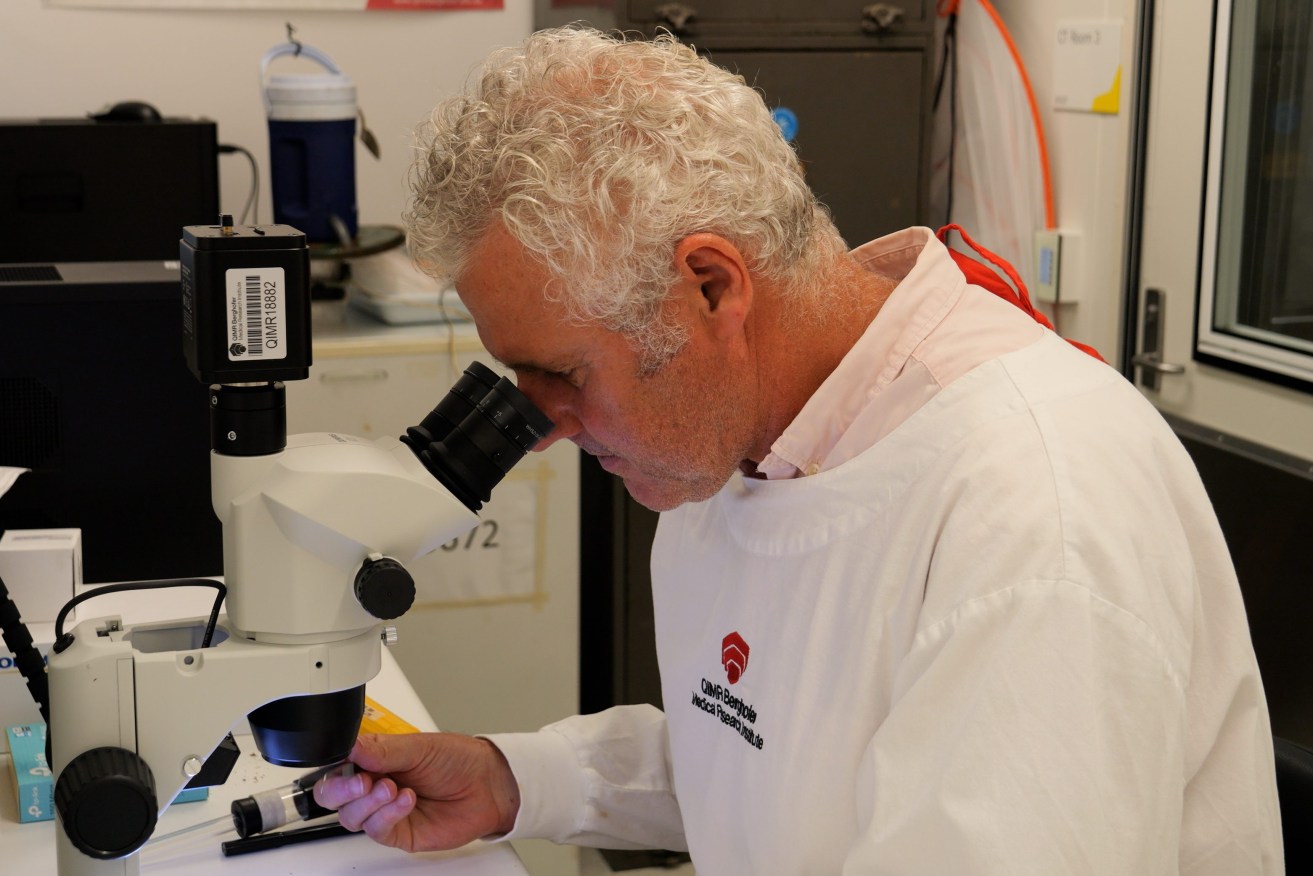Doctors warn that big wet likely to bring mozzie-borne disease outbreak
Doctors and scientists are warning of a major outbreak of Japanese encephalitis across Queensland and southern states this summer caused by back-to-back La Niña seasons.


QIMR Berghofer Mosquito Control Laboratory chief, Associate Professor Greg Devine, said as many as 750,000 people could be at risk from the virus. (Image supplied)
It’s the first time such a warning has been issued, with at-risk people being urged to seek vaccinations for the disease.
QIMR Berghofer Mosquito Control Laboratory chief, Associate Professor Greg Devine, said as many as 750,000 people could be at risk from the virus. Up to 40 cases have so far been identified across the country. This includes six deaths.
Japanese encephalitis is spread by mosquitos and can cause swelling of the brain in serious cases or even death.
While the chances of getting a serious case of the disease is low, those that do contract it have an almost one-in-three chance of suffering severe neurological symptoms and can sometimes die. Of those who develop symptoms but survive, about half can expect to suffer long-term neurological damage.
Infectious diseases epidemiologist from The University of Queensland School of Public Health, Professor Colleen Lau, said measuring the spread of the Japanese encephalitis virus (JEV) was difficult because only a small number of people bitten by the mosquitoes showed symptoms. But those that did could be quickly and severely affected.
“Symptoms range from a fever through to severe encephalitis, or inflammation of the brain. There is no specific treatment for Japanese encephalitis, so we can only manage symptoms and provide supportive management,” Lau said.
“There are two highly effective and safe vaccines available in Australia, but supplies are limited so health authorities are prioritising vaccination for high-risk groups.”
Devine said swarms of mosquitoes breeding in La Nina conditions meant the virus could run rampant over the coming months.
Until last year, the virus was confined only to Asia and far northern Australia.
But the ideal mosquito-breeding conditions and the discovery of the virus in wild water birds that were migrating south to newly created wetlands had caused a massive spread and brought it close to larger populations, he said.
The virus has also been identified in domestic and feral pigs.
“Until very recently…it was confined to the very north of Australia. But then earlier this year, and probably starting at the end of 2021, there was a massive kind of southern expansion of Japanese encephalitis,” Devine said.
“And we think probably the virus came in with wild birds from the north, either from Asia or possibly from north Australia and those birds with the virus began to settle in new freshwater habitats throughout the southeast, all the way down the eastern seaboard through Queensland, NSW, Victoria and into South Australia.”
Devine said if the virus spread through piggeries, anyone living within four kilometres of an infected piggery was potentially at risk.
“Modelling based on piggery distributions and the human population concludes that up to 3 per cent of the population, or 740,546 people, could be at risk,” he said.
“Most Australians have not been exposed to the virus before, so they have no immunity. We are urging people to take precautions,” Devine said.
“The best protection is vaccination, but currently that’s not available to everyone. The next best protective measure is to avoid being bitten by a mosquito.”.












